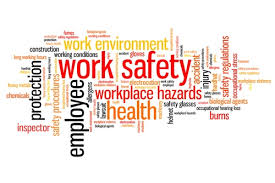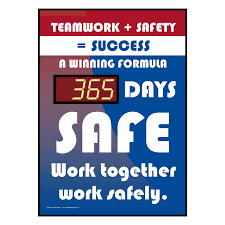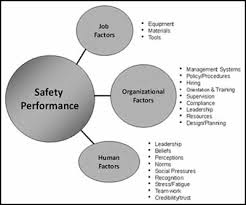Safety Formulas:
INTRODUCTION
Purpose
The purpose of this element is to provide a practical and uniform method for recording & measuring incidents and employee injuries occurring on the job. Incident and injury rates will be compiled in accordance with the American National Standards Institute (ANSI) Z16.4 code. This information will be used to evaluate:
- The seriousness of the employees’ injury trends.
- Relative need for activities designed to promote safe work practices and procedures.
- Effectiveness of activities designed to promote safety activities.
- Progress being made in improving the injury experience for employees in their work environment, and
- Basis for general analysis of injury categories to assist in prioritizing injury prevention efforts.
INCIDENT RATE(S)
Incident rates, of various types, are used throughout industry. Rates are indications only of past performance (lagging indicators) and are not indications of what will happen in the future performance of the company (leading indicators). Incident rates have been standardized, so that OSHA and other regulatory agencies can compare statistically significant data, and determine where industries may need additional program assistance. OSHA uses the recordable incident rates to determine where different classifications of companies (manufacturing, food processing, textiles, machine shops, etc.) compare to each other with regard to past safety performance. Although OSHA could potentially use this data for enforcement action, unless incident rates are consistently high for a small company over a number of years, they will not normally target particular industries or companies for enforcement action.
OSHA has established specific mathematical calculations that enable any company to report their recordable incident rates, lost time rates, and severity rates, so that they are comparable across any industry or group. The standard base rate for the calculations is based on a rate of 200,000 labor hours. This number (200,000) equates to 100 employees, who work 40 hours per week, and who work 50 weeks per year. Using this standardized base rate, any company can calculate their rate(s) and get a percentage per 100 employees.
OSHA RECORDABLE INCIDENT RATE - a mathematical calculation that describes the number of employees per 100 full-time employees that have been involved in a recordable injury or illness.
TOTAL INCIDENT RATE – a mathematical calculation that describes the number of recordable incident per 100 full-time employees in any given time frame.
LOST TIME CASE RATE – a mathematical calculation that describes the number of lost time cases per 100 full-time employees in any given time frame.
LOST WORKDAY RATE – a mathematical calculation that describes the number of lost workdays per 100 full-time employees in any given time frame.
SEVERITY RATE – a mathematical calculation that describes the number of lost days experienced as compared to the number of incidents experienced.
DART RATE - a mathematical calculation that describes the number of recordable incidents per 100 full time employees that resulted in lost or restricted days or job transfer due to work related injuries or illnesses.
Reports on File
On the following page are lists of some of the safety-related reports that are kept on file. Some are maintained in the Safety and Health file system and others with other parties.
The appropriate personnel and regulatory agencies must be able to access them.
- First Aid Records (at the first aid locations)
- Inspection Reports
- Incident Investigation Reports
-
Hazardous Substance Inventory
- Job Hazard Analysis Inventory
- Material Safety Data Sheet (at the specific locations)
- Joint Safety Committee Minutes
- Log Books on Equipment (Maintenance shop/with the equipment)
- Maintenance records (Maintenance Shop)

- Training records
- Audio metric records
- Inspection reports
- Frequency and severity rating.
Calculations:
 OSHA Recordable Incident Rate (IR)
OSHA Recordable Incident Rate (IR)
The OSHA Recordable Incident Rate (or Incident Rate) is calculated by multiplying the number of recordable cases by 200,000, and then dividing that number by the number of labor hours at the company.
Number of OSHA Recordable Cases X 200,000
IR = -----------------------------------------------------------
Number of Employee labor hours worked
Lost Time Case Rate (LTC)
The Lost Time Case Rate is a similar calculation, only it uses the number of cases that contained lost work days. The calculation is made by multiplying the number of incidents that were lost time cases by 200,000 and then dividing that by the employee labor hours at the company.
Number of Lost Time Cases x 200,000
LTC Rate = -----------------------------------------------------
Number of Employee Labor Hours Worked
DART Rate (Days Away/Restricted or Job Transfer Rate)
The DART rate is relatively new to industry. This rate is calculated by adding up the number of incidents that had one or more Lost Days, one or more Restricted Days or that resulted in an employee transferring to a different job within the company, and multiplying that number by 200,000, then dividing that number by the number of employee labor hours at the company.
Total Number of DART incidents x 200,000
DART Rate = -----------------------------------------------------
Number of Employee Labor Hours Worked
Severity Rate (SR)
The severity rate is a calculation that gives a company an average of the number of lost days per recordable incident. Please note, that very few companies use the severity rate as a calculation, as it only provides an average. The calculation is made by dividing the total number of lost workdays by the total number of recordable incidents.
Total number lost workdays
SR = ---------------------------------------------
Total number of recordable incidents
The records and statistics covers the recording and treatment of data necessary for the computation of incident and injury rates of employees, and forms a general basis for analysis of the reported incident and injuries. This information will then be utilized to examine the safety and health program, which may assist in the identification of trends and what measures should be undertaken to improve incident prevention.
SAMPLE DATA
Number of Employees: 47
(all hourly and salaried personnel)
Number of hours per week: 111,935 (50 hours/week)
Number of lost time injuries: 5
(employee unable to work on next scheduled workday)
Number of days lost: 81
(scheduled workdays - not counting day of injury)
Number of licensed units: 36
(spares, autos, pick-ups and revenue producing)
Number of Vehicle Accidents: 25
(any claim or damage involving a licensed unit)
Number of OSHA Recordable Cases: 18
(total cases on OSHA log)
Number of light duty days 10
A. Lost-Time Injury Frequency Rate
No of Lost-Time Injuries x 200,000
Formula: ------------------------------------------------ Total Hours Worked
5 x 200,000
Sample Data: ------------------------ 111,935
Frequency Rate: 8.93
Based on 5 lost-time injuries for 111,935 hours of exposure, this company would experience 8.93 lost-time injuries by the time they reached 200,000 hours. Note: 200,000 hours represents the equivalent of 100 employees working 1 full year.
B. Lost-Time Injury Severity Rate
No of Work Days Lost x 200,000
Formula: --------------------------------------------
Total Hours Worked
18 x 200,000
Sample Data: -------------------------
111,935
Severity Rate: 32.16
Based on 81 lost workdays for 111,935 hours of exposure, this company would experience 145 days lost by the time they reached 200,000 hours.
C. OSHA Recordable Frequency rate:
No of recordable injuries/illness x 200,000
Formula: ---------------------------------------------------------
Total Hours Worked
81 x 200,000
Sample Data: ------------------------
111,935
Frequency Rate: 144.73
Based on 91 lost and light duty workdays for 111,935 hours of exposure,this district would experience 162.59 lost and light duty workdays by the time they reached 200,000 hours.
D. OSHA Recordable Severity Rate
( No of work days lost + light duty days lost) x 200,000
Formula: -------------------------------------------------------------------------
Total Hours Worked
(81 + 10) x 200,000
Sample Data: -----------------------------
111,935
Frequency Rate: 162,59
Based on 18 OSHA recordable cases for 111,935 hours of exposure, this company would experience 32.16 OSHA recordable injuries/illnesses by the time they reached 200,000 hours.
METHODS
The method of calculating FR and SR varies from country to country.Further,in all those calculations, minor injuries or first-aid incidents involving few human-hours lost are not considered. The objective of this paper is to devise a formula which can be applied universally,taking into account all the human-hours lost and to benchmark it within industrial sectors or on a national level. Further, to benchmark occupational safety and health management between workplaces and even among countries, a universal safety performance factor (SPF) or indicator is required.
Singapore
Singapore’s Ministry of Manpower defines FR as the number of accidents / one million human-hours worked (i.e., FR = number of industrial accidents reported per number of human-hours worked) × 1 000000). SR is the number of industrial human-days lost per one million human-hours worked (i.e., SR = number of reported human-days lost × 1000000/number of human-hours worked).
USA
The U.S. Occupational Safety and Health Administration defines incidence rate as the number of injuries/illnesses × 200000/employee-hours worked, where 200000 represents the equivalent of 100 employees working for 40 hrs per week, 50 weeks per year. SR is the total number of lost workdays per year × 200000 work hrs/number of workers in a job (or a department) × 2000 hrs. Incidence rate is usually expressed as the number of cases per 100 workers per year.
Korea
The Korea Occupational Safety and Health Agency defines accident rate as the number of workers covered by the industrial accident compensation insurance act × 100, fatality rate as the number of workers covered by the industrial accident compensation insurance act × 10000, morbidity rate as the number of workers covered by the industrial accident compensation insurance act × 1000 and SR as (work days lost/annual hours worked) × 1000.
Japan
The Japan Industrial Safety and Health Administration [6] defines an occupational accident as death, injury or disease suffered by a worker due to causes attributable to buildings, equipment, raw materials, gases, vapors, dust and other phenomenon related to work or as a result of a worker’s conduct while he/she is at work. Accidents while commuting to and from work are not included. Further, the Administration defines a serious accident as an accident that results in three or more deaths or injuries. Annual accident rate per 1000 workers is defined as the total number of casualties in one year × 1000/average number of workers in one year. Accident frequency rate is defined as the number of deaths and injuries in occupational accidents × 1000000/aggregate number of human-hours, and accident severity as the number of workdays lost rate × 1000000/aggregate number of human-hours. Further, the number of workdays lost is computed based on 300 work days per year.
UK
The UK’s Health and Safety Executive defines lost time accidents as those that result in more than one day of lost time and FR is based on a 12-month rolling period and is calculated per 100 000 hrs worked.
SPF
After analyzing the traditional method of calculating FR and SR, a new definition for SPF is devised:
total man-hours lost
SPF = ---------------------------------------
total number of incidents lost
Calculating SPF—lost time per number of incidents—is a reliable and simple tool, which clearly spells out the company’s safety culture and performance. This formula is easy to calculate and does not depend on the number of employees. However, reporting accidents has to continue. The SPR is only a guide to computing a company’s safety performance and to bench marking it against any industrial sectors or national or international organizations.
